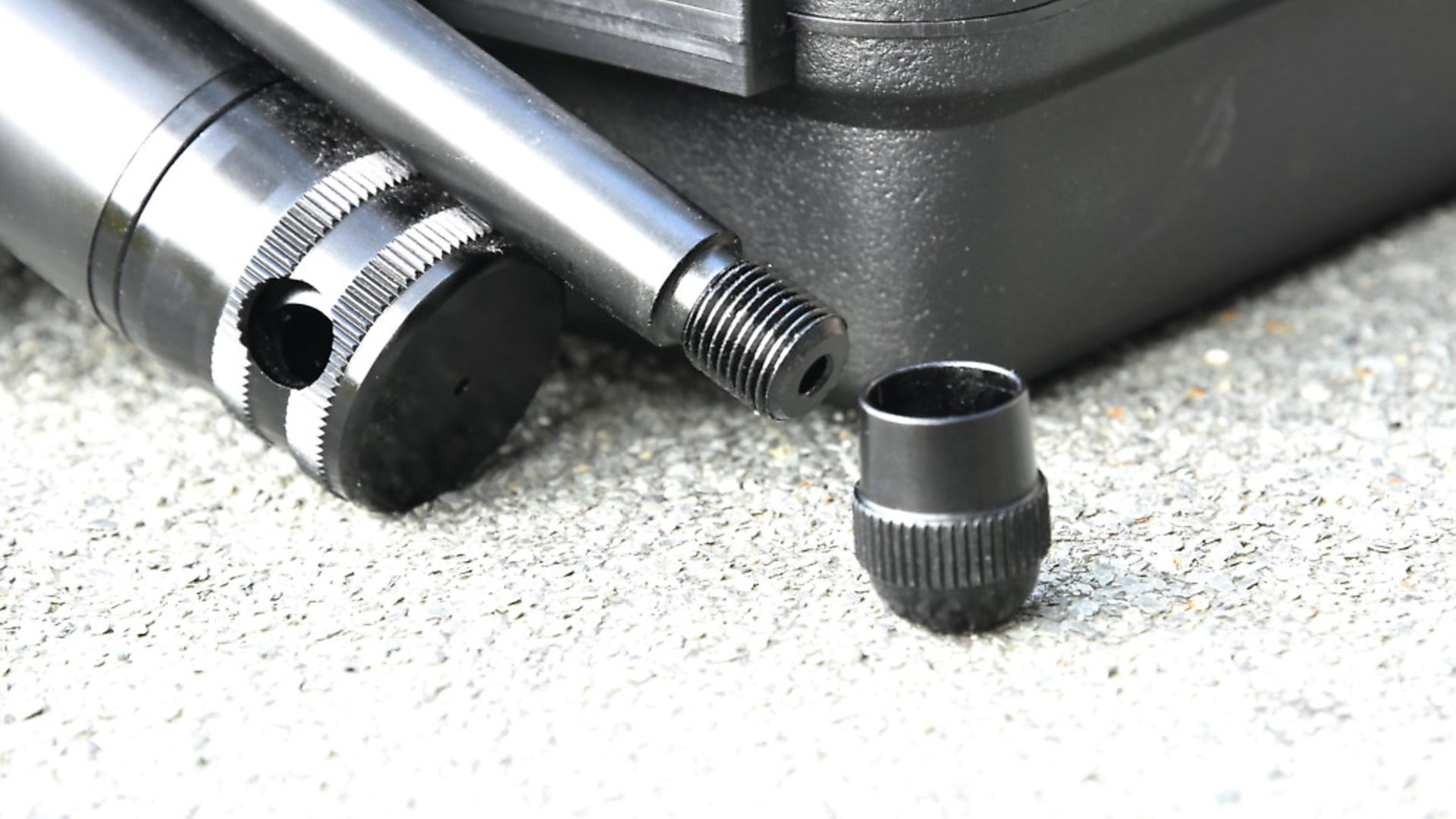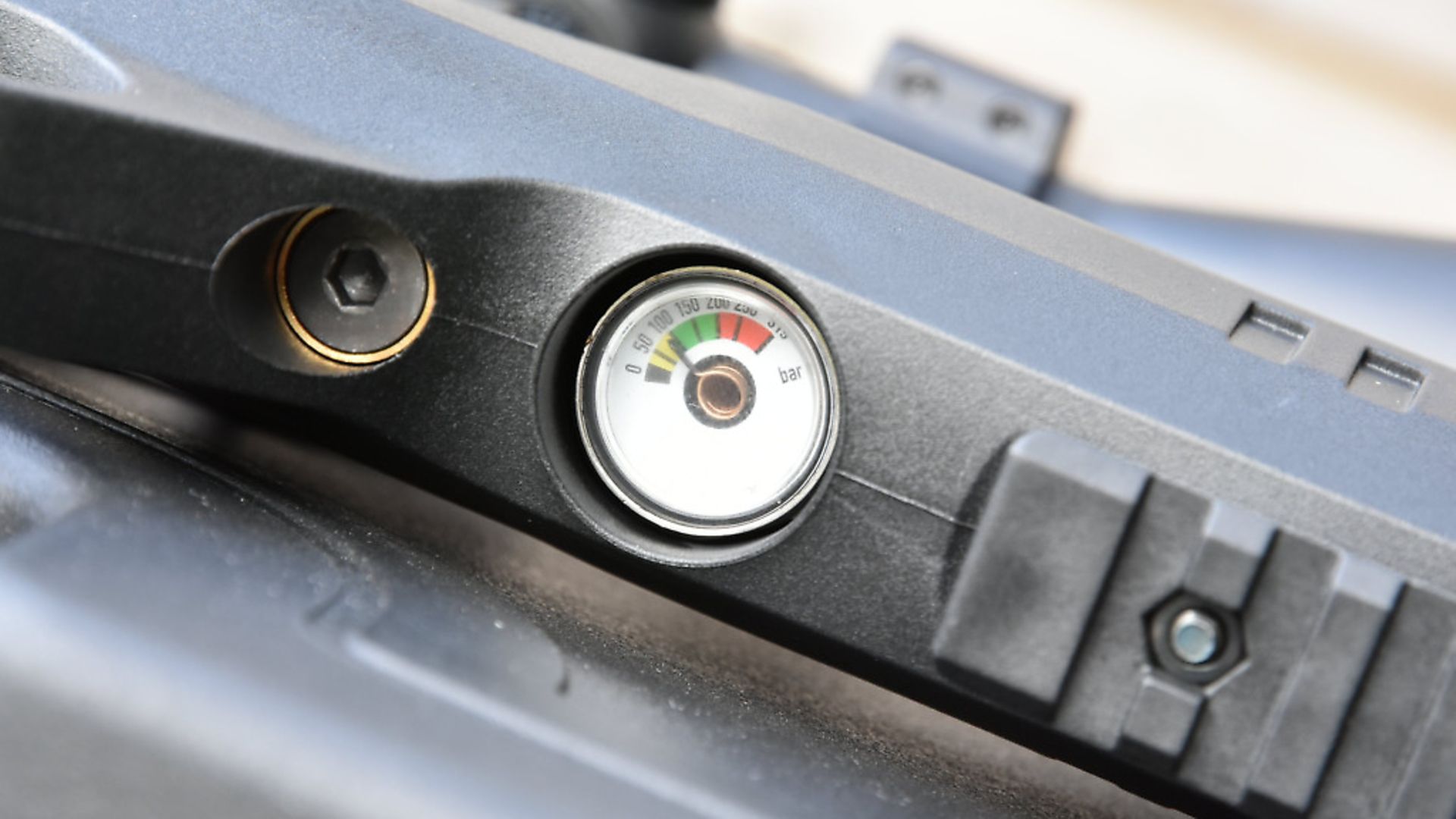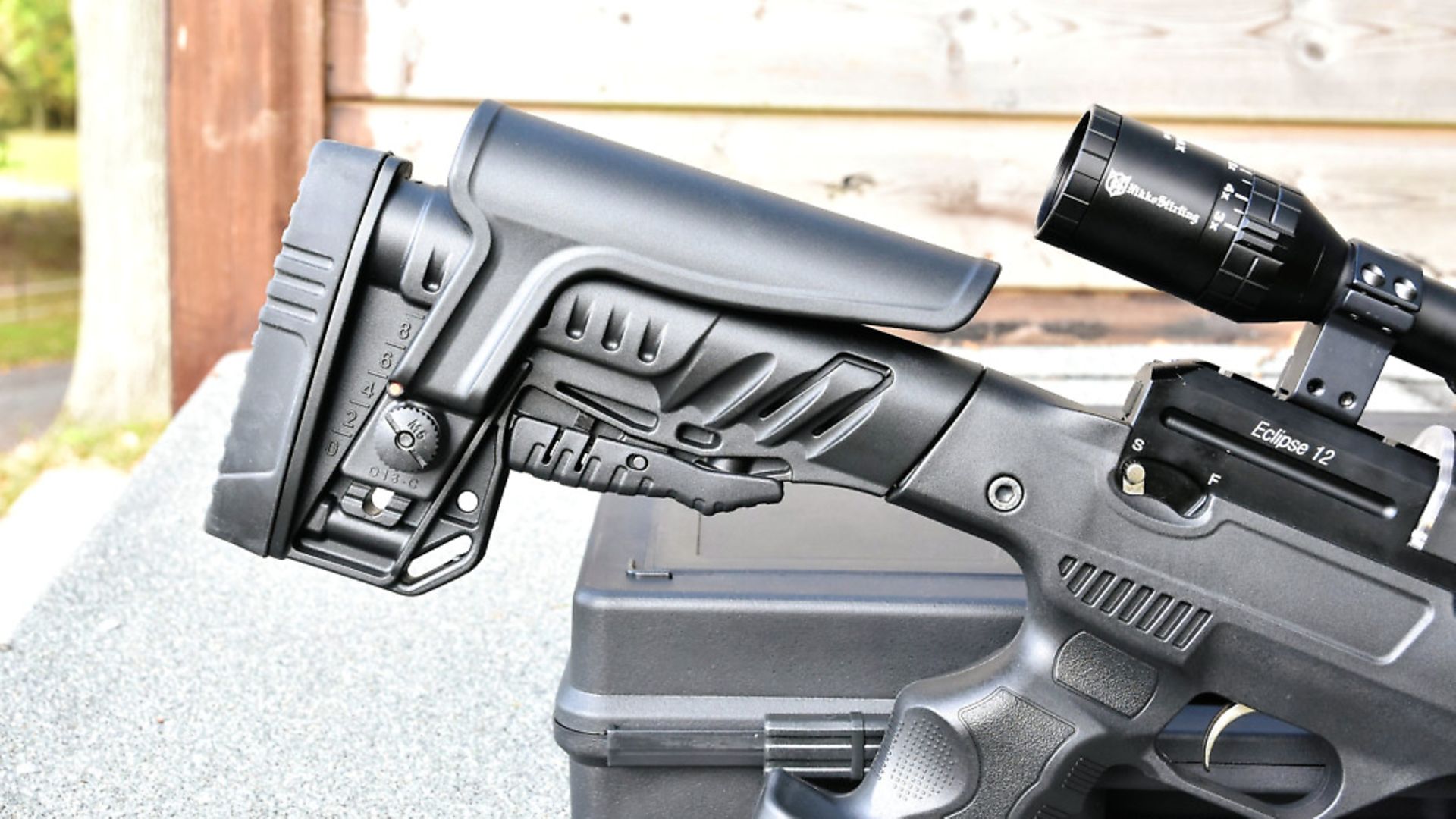Is this innovative and compact rifle the ultimate ratter?
 credit: Archant
credit: Archant
I looked at the side of my compost bin and my heart sank. ‘They’re back,’ I thought, and I knew I needed to make a plan. Rats come and go in my garden and seem to think that the very finest residence is my Dalek-shaped compost bin. It’s not the first time I’ve had this problem. After the last infestation I put chicken wire under the bin, but these little blighters had found small space to get through and were in residence right beside my house. High velocity lead would be my solution, but I needed a compact rifle with modest power to deliver it.
Webley has a family of rifles all based on a common action that includes the Eclipse you see on test. The action block is clearly versatile because it can deliver high, FAC-rated power, and the 5 ft.lbs.-plus that you see on offer here. This modest power delivery looked just right for my needs because I’d be shooting between my house and our neighbour’s, so the danger of a damaging ricochet was clearly unacceptable.
The Eclipse is unusual because it comes in a hard shell case and needs its stock attached with a sturdy bolt before it’s ready to shoot. It can be shot as a pistol, which explains the restricted power, but you’d need to be a professional body builder to hold it up. The system makes much more sense as an ultra-carbine, close-range specialist ratting tool. The tactical layout delivers much the same features as an assault rifle, in that it’s short and handy and comes on aim in the blink of an eye, and in this role it makes sense to me.
If your pest control work involves coming and going from buildings that are overlooked by Joe public, the carry case is very discreet and would attract no more attention than a battery drill box. It has a fair depth of padding and some nice solid locks, so is a welcome addition to a rifle at this price.
 credit: Archant
credit: Archant
Ambidextrous
Being so short and neat, the Eclipse is easily handled in and around sheds, barns, grains stores and stables. It wears a tough synthetic stock that will accept the inevitable bashes and knocks this kind of work dishes out, without worry or too much degradation of its good looks. The M4-style stock is adjustable for length of pull and offers an adjustable height cheek piece. The latter function is worth its weight in gold, because it dramatically reduces parallax error, a hidden source of misses that’s so difficult to explain. It seems hard to grasp, but parallax error gets bigger as the ranges get shorter, so don’t underestimate just how important this feature is.
Pistol grips are the norm for rifles like this, but this one stands out. It forms a bridge between the typical assault rifle job and an ergonomic target pistol one. As is standard these days, it’s ambidextrous, yet features enough cuts, grooves and notches to boggle the mind. However, once held, all those shapes make sense as it fills the palm and arranges your fingers. What the cut-outs towards the rear are for still remains a mystery, though. I found the reach to the trigger blade quite short, even for my medium-sized hand, so if you have big paws you should handle one of these before you buy.
The trigger unit itself is a two-stage adjustable affair, set with a rather long second stage that was quite indistinct at its let-off point. It broke at just over two pounds which is very nice for a production gun like this. I’m sure a skilled gunsmith could release its full potential with a little time and patience.
 credit: Archant
credit: Archant
Innovation
The air reservoir sits in the conventional barrel-over-reservoir location and is filled with a brass probe through a port just behind the muzzle. A rotary collar covers this delicate orifice and performs the oh-so-important job of keeping dust and dirt out of the rifle’s delicate internal mechanism. I was pleased to see that the reservoir pressure gauge is in the belly on the stock, just in front of the trigger guard rather than up near the muzzle. This position just feels safer than putting the muzzle close to your face.
The maximum fill pressure is 200bar and I’m told that we should expect some 40 shots per fill from the production guns. We should also expect around 5.5ft.lbs. in both .177 and .22 calibres although my prototype delivered less than that, but as the action is capable of huge power outputs in its full-length versions, I can’t see muzzle energy being an issue.
Although the stock is ambidextrous, the side lever pivots on the left side of the action, which is a challenge to the norm. The logic here was that for right-handed shooters the rifle could be held on aim, with your trigger hand still on the pistol grip, whilst your left hand cycles the action, and there’s no doubt that this works. Time will tell how this is accepted, but I applaud Webley for the innovation.
 credit: Archant
credit: Archant
Versatility
The action block you see in the pictures offers a little confusion in terms of scope mounting. Although it looks like the military spec’ Picatinny standard, the prototype supplied to me was actually an 11mm airgun standard job with cross-cuts, whilst the production guns will have the proper Picatinny rail. This means that you’d need the matching mounts and that your existing 11mm mounts will be redundant.
To ensure versatility, I fitted a Nikko Sterling 3-9 x 40 scope with parallax adjustment that comes down to 10 yards, which is vital for close-range ratting work. I’d have liked a smaller scope still, which I feel would have better suited the diminutive stature of the Eclipse. Bulky scopes have a top-heavy effect on any gun, but on a lightweight their mass is more noticeable. That being said, the Eclipse has enough mass to feel steady on aim, which for me is very important. Airgun hunting is all about accuracy, no matter the range, and precise shot placement is aided by a stable rifle.
 credit: Archant
credit: Archant
No change in zero
Regardless of any rifle’s configuration, it must be accurate or I have no interest in it and I’m pleased to report that this prototype printed ½” groups at 25 yards with the Webley Mosquito pellets, plus the odd flyer that spoilt the group. This means that at 10 to 15 yards it will put a pellet through a rat’s brain every time, as long as we do our part.
To get myself used to the Eclipse’s unusual configuration, I gathered up some small windfall apples and put them out at 15 yards. Coming up on aim and taking the shot smartly, I began to see the benefits of this layout. I’d fitted my standby Weihrauch silencer which is the industry standard and which made the Eclipse very quiet indeed. It also added a little muzzle weight, which aided stability without slowing mounting down too much. Interestingly, I found no change in zero with the silencer fitted or without.
I found that I was easily able to explode the 1” apples almost every time, even when shooting really fast. Now, I’d never shoot at a living creature like that, but it proved the concept and was great fun in the process. I’ll be open and say that the tactical look is not my cup of tea, but as a hard-working ratter I can see that it makes sense here. I also noted that the long second-stage of the trigger was less noticeable in this scenario than when trying to shoot perfect groups from the bench. It’s well accepted that this type of stock doesn’t shoot well from the bench and bags, so perhaps that would explain my additional focus on the trigger.
 credit: Archant
credit: Archant
Star quality
As ever, I really appreciated an adjustable height cheek piece because it naturally aligns your eye with the scope and eliminates any unnecessary adjustments of your head position while you’re trying to get onto a shot. I really do believe that they are the future all high-performance airguns and are a definite aid to better performance.
I wondered how the firing cycle would be with such a modest power output and unsurprisingly, it was soft and almost rubbery. An action capable of such immense power running at tick-over can be under almost no stress at all, so it’s logical that it would be smooth and quiet, with the silencer on. With it off, I was surprised at just how noisy the Eclipse was, but I guess the 11¼” barrel was bound to bark. Later models will have slightly longer barrels, but I don’t think they’ll affect performance one way or the other.
Perhaps you’re wondering if I got my garden rat and I have to announce that sadly, I did not. I waited with the Eclipse on a rest for a few hours a couple of times, but I think their absence might be explained by my neighbour’s love of poison when it comes to rat visits. I don’t like the idea of introducing poison to the countryside, but what my neighbour does in his own garden is up to him. I did have complete confidence that the hugely unusual Eclipse would have delivered the goods if I’d got my sights on Mr Rat. A sub 6ft.lbs. rifle isn’t for everybody and every hunting situation, but as a close-range ratter I think it has star quality.
Specification
Manufacturer: Webley
Importer: Highland Outdoors
Web: highlandoutdoors.co.uk
Model: Eclipse
Type: Pre-charged pneumatic
Action: Magazine-fed, sidelever
Calibres: .177 and .22
Trigger: Two-stage adjustable
Length: 25 to 28 ¼ (63.5 to 71.75cm)
Weight: 5.5lbs (2.5kg)
Shots per fill: 42 (claimed)
Fill pressure: 200
Magazine capacity: 14 in .177, 12 in .22
RRP: £449.99 (price includes hard-shell case and two magazines)
__________________________________________________
See more gun tests...
Webley En4cer 12
Webley VMX Cub
Webley Mastiff
Webley VMX OS